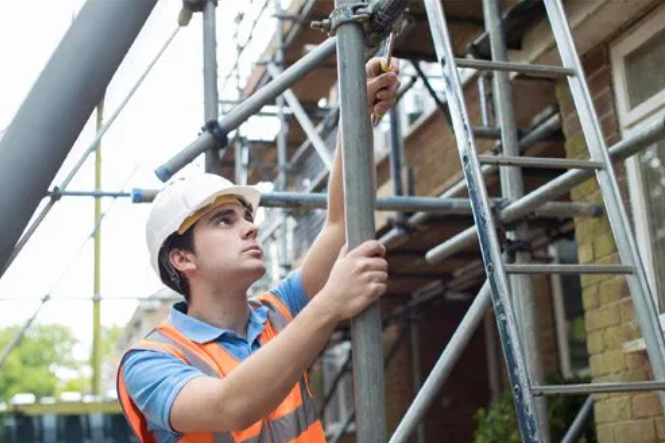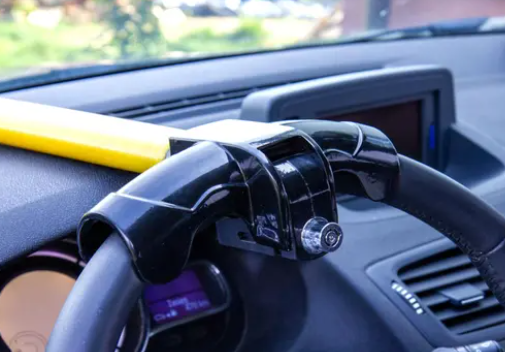How to Tie a Trash Bag Like a Pro: Easy Tips for Securing Your Waste
Understanding Your Trash Bag’s Anatomy
Before you even think about how to tie a trash bag like a pro, it’s important to understand what you’re working with. Not all trash bags are created equal, and knowing the differences can save you from messy situations. I mean, nobody wants a trash explosion, right?
The Importance of Bag Thickness
Bag thickness is measured in mils (one-thousandth of an inch). The higher the mil, the thicker and more durable the bag. For light household waste, a thinner bag might be fine. But for heavier or sharper items, you’ll want something more substantial. Think about it: a flimsy bag trying to hold broken glass? Disaster waiting to happen. I usually go for something in the middle – not too thin that it rips easily, but not so thick that it’s overkill for everyday trash.
Here’s a quick guide:
- Light Duty (0.7-0.9 mil): Paper, tissues, light kitchen waste
- Medium Duty (1.0-1.2 mil): General household trash
- Heavy Duty (1.5+ mil): Construction debris, yard waste, sharp objects
Drawstring vs. Flap Tie Bags
This is a matter of personal preference, really. Drawstring bags are super convenient – you just pull the strings, and the bag is closed. Flap tie bags have those little flaps you tie together. Some people find flap ties easier to manage, while others prefer the simplicity of a drawstring. I’ve used both, and honestly, it depends on my mood. Drawstrings are great for quick disposal, but flap ties can sometimes provide a tighter, more secure closure, especially if you know how to tie a trash bag properly.
Choosing the Right Size for Your Bin
This seems obvious, but it’s a common mistake. A bag that’s too small will be a pain to stretch over the bin, and it’ll probably rip. A bag that’s too big will be a waste of plastic and can be awkward to manage. Measure your bin’s height and circumference to find the right size bag. Also, consider the shape of your bin – round or rectangular – as this can affect the fit. If you’re considering a larger project that will generate a lot of waste, you might even look into a bin rental near me to handle the volume efficiently.
Using the correct size bag not only prevents messes but also makes the entire process of taking out the trash much smoother. It’s a small detail that can make a big difference in your daily routine.
The Classic Rabbit Ear Knot
Preparing the Bag for Tying
Okay, so you’ve got a full trash bag. First things first, make sure you’re not trying to tie it when it’s overflowing. That’s just asking for trouble. Give the top of the bag a good gather. You want to squeeze out as much air as possible. This helps compress the contents and makes the bag easier to handle. Trust me, a little pre-tie squeeze can save you a lot of hassle later. Also, check for any rogue pointy objects poking through. Nobody wants a trash-related injury.
Forming the Initial Loops
Now for the fun part, the “rabbit ears.” Grab the gathered top of the bag. Divide it into two sections, one for each hand. Create a loop with each section, like you’re about to tie your shoelaces. The size of the loops depends on how much extra bag you have. If you’ve got tons of extra plastic, make bigger loops. If it’s a tight fit, keep them smaller. Cross one loop over the other, just like starting a regular knot. This is where it starts to look like those cute little rabbit ears.
Securing the Knot Tightly
Alright, you’ve got your loops crossed. Now, pull each loop through the opening created by the other. This is the actual knot-tying part. Pull tight. Really tight. You want to make sure that knot isn’t going anywhere. Give it a good yank to test it. If it feels loose, redo it. A loose knot is basically an invitation for trash to spill everywhere. And nobody wants that. If you’re dealing with a particularly heavy bag, consider twisting the “ears” before tying the knot. This adds extra security. Also, consider if a “bin rental near me” would be a better solution for large amounts of trash. Knowing how to tie a trash bag is important, but sometimes you need a bigger solution.
A properly tied trash bag is more than just about containing waste; it’s about preventing messes, controlling odors, and ensuring safe handling for sanitation workers. Taking the extra few seconds to tie a secure knot can make a significant difference in maintaining cleanliness and hygiene.
Here’s a quick recap:
- Gather the bag and squeeze out air.
- Form two loops (rabbit ears).
- Cross the loops and pull tight.
And if you’re still struggling, maybe it’s time to consider a “bin rental near me” for those extra-large cleanups!
Mastering the Swan Neck Method
This is a cool way to tie a trash bag, and it’s not just for show. It’s actually pretty practical, especially if you want to really compress the trash inside and make sure nothing spills out. It’s a bit more involved than just tying the handles, but the result is a much more secure and manageable bag. Plus, it looks kinda neat, right?
Creating a Secure Neck
Okay, so the first thing you gotta do is gather the top of the trash bag. Instead of just pulling it straight up, try to twist it a little as you gather it. This starts to form that ‘neck’ that gives the method its name. Make sure you’ve got a good grip, and try to squeeze out any extra air that’s trapped inside the bag. The tighter you can get this initial neck, the better the final knot will be. Think of it like you’re making a ponytail, but for trash. If you’re dealing with a really full bag, this might take a little extra effort, but it’s worth it.
Twisting for Optimal Compression
Now comes the twisting part. Keep twisting that neck you created earlier. The more you twist, the tighter the bag gets, and the more secure your knot will be. You’re basically compressing all the trash down, which is great if you’re trying to cram as much as possible into one bag. Don’t be afraid to really put some muscle into it, but also be careful not to rip the bag. You want a tight, firm twist, not a torn mess. This is where the thickness of your trash bag really matters. If you’re using a flimsy bag, it might not hold up to this kind of twisting. Also, consider if you need a bin rental near me for larger projects.
Folding and Tucking for a Clean Finish
Alright, you’ve got your twisted neck. Now, take the twisted part and fold it over itself, creating a loop. Then, tuck the end of the twisted neck through the loop you just made. This is what creates the ‘swan neck’ look and also locks the knot in place. Pull it tight to secure everything. If you’ve got a lot of excess bag, you can tuck it in further to keep it from dangling. The goal is a neat, compact knot that won’t come undone easily. This method is especially good for bags that are a little too long because it uses up some of that extra material. And that’s it! You’ve successfully mastered the swan neck method for how to tie a trash bag.
This method is particularly useful when dealing with kitchen waste, as it helps to minimize odors and prevent leaks. By compressing the contents and creating a tight seal, you can keep your trash area cleaner and more hygienic. It’s a small extra step that makes a big difference.
Advanced Tying Techniques for Heavy Loads
Sometimes, you’re dealing with trash bags that are just plain heavy. Maybe you’ve been doing some serious yard work, or perhaps you just had a massive clear-out. Whatever the reason, a standard knot might not cut it. That’s where these advanced techniques come in handy. They’re designed to give you that extra bit of security and prevent those dreaded mid-carry blowouts. Nobody wants to deal with spilled garbage, right?
The Double Knot for Extra Security
This one’s pretty straightforward, but it makes a huge difference. Instead of just tying a single knot, you tie two. It’s like doubling down on your security. Here’s how I usually do it:
- Gather the top of the bag as usual.
- Tie a standard overhand knot.
- Now, tie another overhand knot right on top of the first one, as tightly as you can.
- Give it a good tug to make sure it’s secure.
It’s simple, but effective. I’ve found this especially useful for bags with food scraps or anything particularly messy.
Reinforcing with Duct Tape
Okay, so this might seem a little extreme, but hear me out. If you’re really worried about a bag breaking, duct tape is your friend. I usually use this method when I’m getting rid of construction debris or anything with sharp edges that might poke through the bag.
- First, tie your bag using one of the methods described above (double knot is preferable).
- Then, take a generous strip of duct tape and wrap it around the knotted area several times.
- Make sure the tape overlaps itself to create a strong seal.
- For extra security, you can also run a strip of tape along the bottom of the bag, where it’s most likely to tear.
I know it sounds like overkill, but trust me, it’s better to be safe than sorry. I once had a bag of broken tiles split open in my car, and it was a nightmare to clean up. Now, I always use duct tape for anything heavy or sharp.
Distributing Weight Evenly
This isn’t technically a tying technique, but it’s just as important. How you fill your trash bag can make a huge difference in how well it holds up. The key is to distribute the weight as evenly as possible.
- Avoid putting all the heavy stuff on one side of the bag.
- Try to layer heavier items with lighter ones.
- If you have something particularly heavy, like a brick or a large piece of metal, try to place it in the center of the bag, surrounded by softer materials.
- Don’t overfill the bag! This puts extra stress on the seams and makes it more likely to tear. If you have too much trash, it might be time to consider a bin rental near me.
By distributing the weight evenly, you’ll reduce the strain on the bag and make it much less likely to break, no matter how to tie a trash bag.
Preventing Leaks and Odors
Lining Your Bin Effectively
Okay, so lining your bin might seem obvious, but there’s a right and wrong way to do it. You want to make sure the bag is actually secured around the rim. Don’t just drop it in there and hope for the best. Overhang is your friend! Make sure there’s enough bag hanging over the edge so it doesn’t slip down when you start tossing stuff in. Also, consider double-bagging for extra messy stuff. It’s a game changer. If you’re dealing with a particularly leaky situation, consider using a plastic bin liner inside the trash bag. It’s like trash bag inception, but it works.
Dealing with Wet Waste
Wet waste is the enemy of a fresh-smelling kitchen. Here’s the deal: drain as much liquid as possible before tossing anything into the bag. Coffee grounds? Squeeze ’em out. Watermelon rinds? Give ’em a shake. Soggy paper towels? You get the idea. Also, consider wrapping really wet stuff in newspaper or a plastic bag before putting it in the main trash bag. It helps absorb some of the moisture. And for goodness sake, don’t let wet waste sit in the bin for days. Take out the trash regularly, especially if you’ve had a particularly juicy meal.
Airing Out Your Bin Regularly
Airing out your bin is a simple yet effective way to combat odors.
Here’s a few things you can do:
- Empty the bin completely and give it a good scrub with soap and water.
- Leave the bin outside in the sun for a few hours to let it air dry.
- Sprinkle baking soda at the bottom of the bin to absorb odors.
Consider this: a clean bin is a happy bin. And a happy bin means a happy, odor-free kitchen. It’s a small effort that makes a big difference. Plus, it’s way better than constantly searching for a bin rental near me because your current setup is a biohazard.
And remember, knowing how to tie a trash bag properly is only half the battle. Preventing the mess in the first place is key!
Troubleshooting Common Tying Issues
Let’s face it, even with the best intentions, things can go wrong when you’re trying to secure your trash. You might overfill the bag, it might tear, or the knot just won’t hold. Here’s how to handle some common trash-tying problems.
When the Bag is Too Full
Overstuffing a trash bag is a recipe for disaster. It puts extra strain on the bag, making it more likely to rip or for the knot to fail. The key is to avoid overfilling in the first place. But if you’ve already done it, here’s what you can do:
- Remove some of the trash to reduce the load. This might mean redistributing some items into another bag.
- Use a larger or stronger bag if you consistently overfill. It might be time to upgrade.
- Try compressing the contents carefully. Be mindful of sharp objects that could puncture the bag.
If you find yourself constantly struggling with overfilled bags, it might be worth considering a bin rental near me. A larger bin could solve the problem entirely.
Dealing with Rips and Tears
Rips and tears can happen, especially with heavier or sharper trash. A small tear can quickly turn into a big mess if you don’t address it.
- For small tears, duct tape is your best friend. Apply it generously to both sides of the tear.
- If the tear is larger, transfer the contents to a new bag. Double-bagging can provide extra security.
- Be extra careful when handling the damaged bag to avoid further tearing. Support the bottom as you move it.
Knots That Won’t Stay Tied
A knot that comes undone is incredibly frustrating. It usually means the trash will spill out when you least expect it. Here’s how to make sure your knots hold:
- Make sure you’re tying the knot tightly. A loose knot is almost guaranteed to fail.
- Use a double knot for extra security, especially with heavy bags. This adds an extra layer of protection.
- Ensure there’s enough bag material to tie a proper knot. If the bag is too full, it might not leave enough slack.
Knowing how to tie a trash bag properly is only half the battle. Understanding how to troubleshoot common issues will help you keep your trash secure and prevent messes.
Disposing of Specialty Waste Safely
It’s easy to forget that not all trash is created equal. Some items require extra care when you’re throwing them away to protect sanitation workers and the environment. Knowing how to handle these materials properly is a key part of responsible waste disposal, and it goes beyond just knowing how to tie a trash bag.
Securing Sharp Objects
Sharp objects like broken glass, needles, and knives pose a significant risk if they’re not handled correctly. The key is to prevent them from piercing the trash bag and causing injury. Here’s how:
- Wrap sharp objects in several layers of newspaper or cardboard.
- Place the wrapped object inside a rigid container, like a plastic tub or a sturdy cardboard box.
- Clearly label the container as “SHARPS” to warn others.
It’s also a good idea to check with your local waste management services for specific guidelines on disposing of medical sharps. Some areas have designated drop-off locations or mail-back programs.
Handling Hazardous Materials
Hazardous materials include things like paint, chemicals, batteries, and electronics. These items can leach harmful substances into the environment if they end up in a landfill. Here’s what to do:
- Never mix hazardous waste with regular trash.
- Check with your local waste management or environmental agency for designated collection sites.
- For electronics, look for e-waste recycling programs.
Many communities have special collection days or permanent drop-off locations for hazardous waste. Take advantage of these resources to dispose of these materials safely and responsibly.
Preparing for a bin rental near me
If you’re dealing with a large amount of waste from a home renovation, construction project, or major cleanup, a bin rental near me might be the best option. But even with a bin rental near me, you still need to be mindful of how to tie a trash bag and what you’re putting in it. Here’s how to prepare:
- Sort your waste: Separate recyclable materials, general trash, and any hazardous waste.
- Protect the bin: Line the bin with heavy-duty trash bags to prevent leaks and make cleanup easier. Knowing how to tie a trash bag properly is important here.
- Distribute weight evenly: Place heavier items at the bottom of the bin and lighter items on top to prevent the bin from tipping over or becoming unstable.
Consider the following table for waste types and disposal methods:
| Waste Type | Disposal Method |
| General Trash | Bagged and placed in the bin rental near me |
| Recyclables | Sorted and placed in designated recycling bins |
| Hazardous Waste | Taken to a designated collection site |
| Construction Debris | Placed in the bin rental near me, if allowed |
Before you start filling the bin rental near me, check with the rental company about any restrictions on what you can dispose of. Some companies may not accept certain materials, such as tires or appliances. Also, make sure you know how to tie a trash bag so nothing spills out during transport.
Wrapping It Up
So there you have it. Tying a trash bag might seem like a small thing, but doing it right can really make a difference. No more spills, no more smells, just a neat, tidy bag ready for pickup. Give these tips a try next time you’re taking out the trash. You’ll probably be surprised how much easier it makes things. It’s one of those little life hacks that just works.






